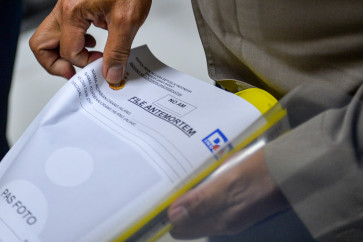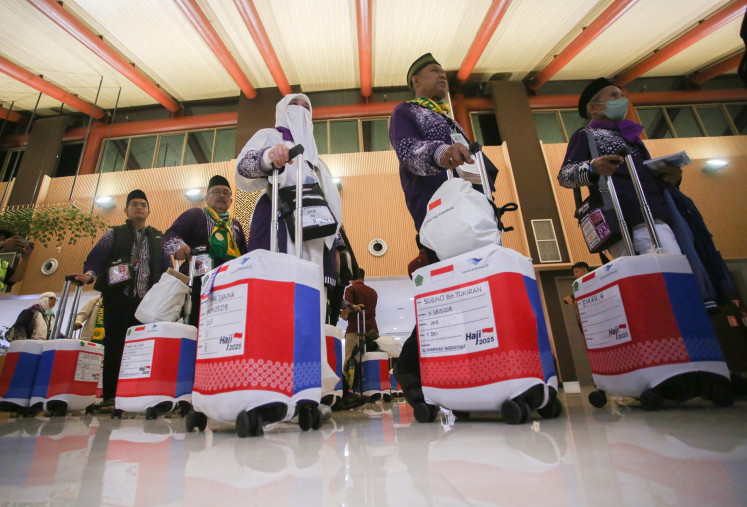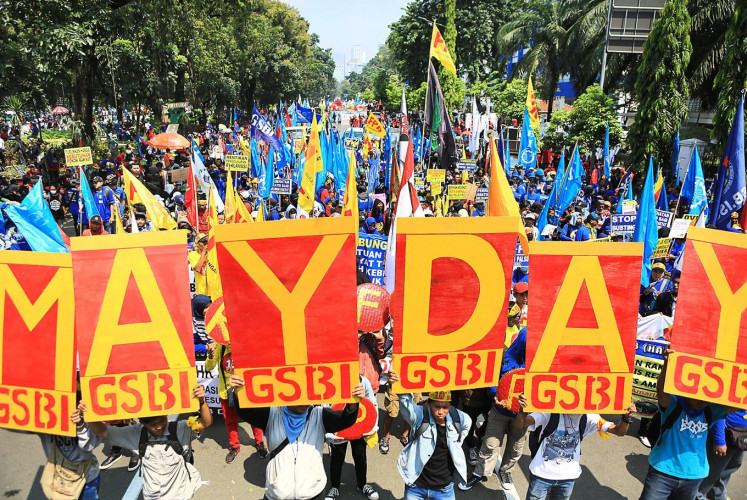Welcoming the US back to Southeast Asia
After years of resistance, the United States finally signed the Treaty of Amity and Cooperation (TAC) in Southeast Asia on July 22
Change text size
Gift Premium Articles
to Anyone

A
fter years of resistance, the United States finally signed the Treaty of Amity and Cooperation (TAC) in Southeast Asia on July 22. Shortly before signing the treaty at the 42nd ASEAN Ministerial Meeting (AMM) in Phuket, Thailand, Secretary of State Hillary Clinton declared that "the United States is back in Southeast Asia" and that the signing of the TAC "seals our commitment to work in partnership with the nations of ASEAN to advance the interest and values we share".
We welcome the return of the US to Southeast Asia after years of neglect. Over the last eight years, the place of Southeast Asia in US foreign policy priorities was pushed even further down due to its preoccupation with the war in Iraq and international terrorism.
The US relationship with Southeast Asian nations was framed primarily in the context of the war on terror, leading to these nations complaining that the US was not paying enough attention to other regional needs.
For the US, signing up to the TAC changed its approach toward the region and reflected a greater understanding of the region. Initially, US objection to the TAC stemmed from its belief that the treaty would limit its freedom of action. By signing it, the US apparently understood that the TAC is more about the gesture than the substance, which will not at all limit US freedom of action. The TAC, like many other ASEAN documents, is non-enforceable. It is only about principles of good inter-state relations.
However, the significance of Washington's decision to accede to the TAC lies precisely in the symbolic nature of the treaty. As mentioned earlier, the signing of the TAC symbolizes the US' willingness to re-engage Southeast Asia, and play a much more visible role in the region.
It will send a strong signal to Southeast Asia and extra-regional powers that the US can no longer be conveniently "ignored" in regional processes. It has now returned as a major - if not paramount - player with full attention and commitment.
Signing the TAC has also satisfied one of the pre-requisites for participation in the East Asia Summit (EAS) for the US. The question is, however, whether the US actually wants to be included in this process at the summit level. The EAS itself still lacks a solid format or direction as a process.
For Southeast Asia, Washington's decision to accede to the TAC and the symbolic meaning of the decision should be warmly welcomed. The region is witnessing an important strategic transformation in East Asia with the rise of China and the emergence of India.
This strategic transformation is changing the nature of power relationships among major powers which, in turn, has already paved the way for the emergence of a new regional architecture in the Asia-Pacific. The return of the US to the region would limit the possibility, and discourage, any single major power from dominating this soon-to-be structure.
The commitment by the US to become more closely involved in regional affairs, however, also provides a challenge for ASEAN. As Secretary Clinton made clear, the US also wants "to advance the interest and values we share".
Not all ASEAN countries share US values, especially democracy, human rights and freedom. The inclusion of these issues in the US foreign policy agenda in Southeast Asia would likely generate complaints from some ASEAN members. However, it is good news for those ASEAN members who want to promote these universal values in the region.
However, it is wrong to assume that the US' agenda in promoting democracy and human rights in the region would create division with ASEAN. ASEAN has already been divided on these issues in the past. The region would be better off if it was allowed to resolve this division without excessive external involvement.
The US should adopt a measured policy in its support to democracy-building agenda in the region, and needs to work closely with democratic ASEAN states to strengthen democracy in these states.
To benefit fully from the renewed US commitment to the region, ASEAN should also work more seriously in addressing any possible and actual problems that could hamper ASEAN-US relations. For one, the problem of Burma needs to be resolved. ASEAN should begin to think about a coherent and comprehensive strategy to address this problem. It is no longer enough for ASEAN to continue the ritual of "expressing concerns" over the lack of progress in Burma.
ASEAN needs to go beyond rhetoric on this issue. It should draw a concrete plan, allocate more resources, and double its efforts to find solutions to the Burmese problem. In this undertaking, the US' support is essential.
It should work closely with ASEAN - or some willing ASEAN members - to find a creative way to address this problem that has served as a stumbling block in US-ASEAN relations. However, it is also crucial for ASEAN not to take offense whenever the US raises its voice against Burma. The time for invoking "ASEAN solidarity" in the face of external criticism against a problematic fellow member is over.









